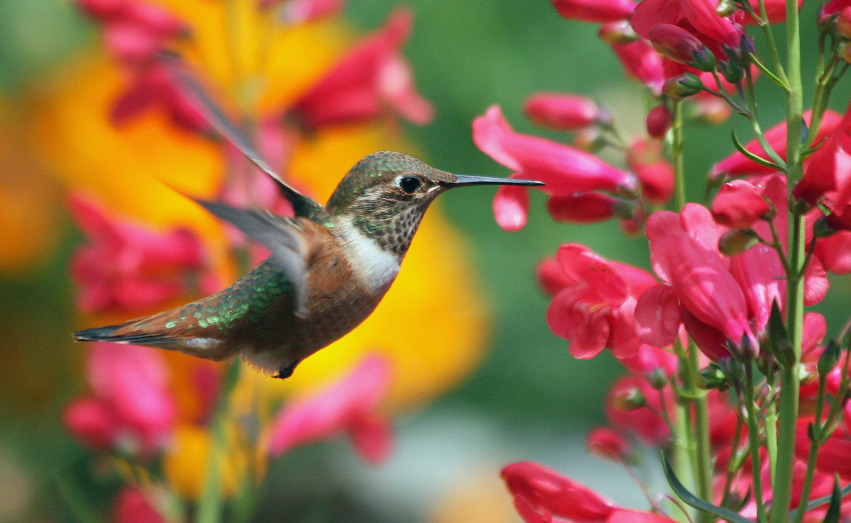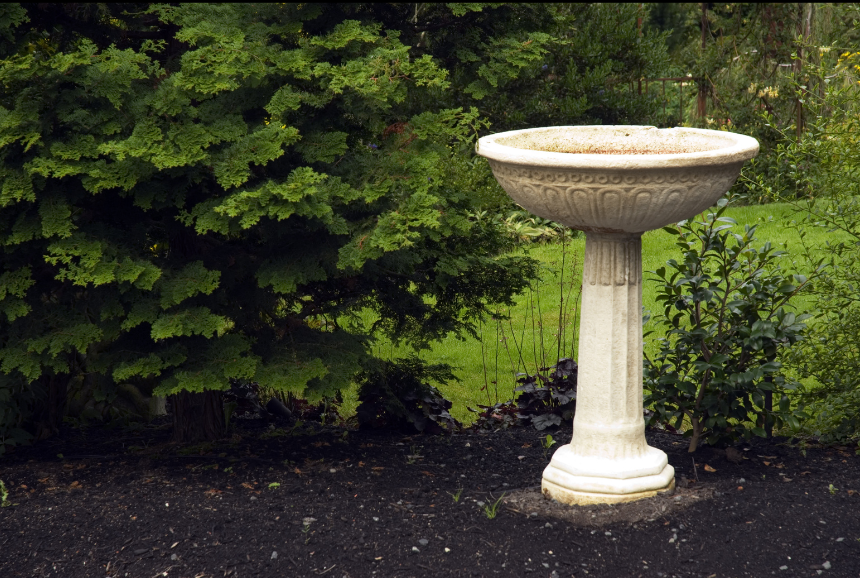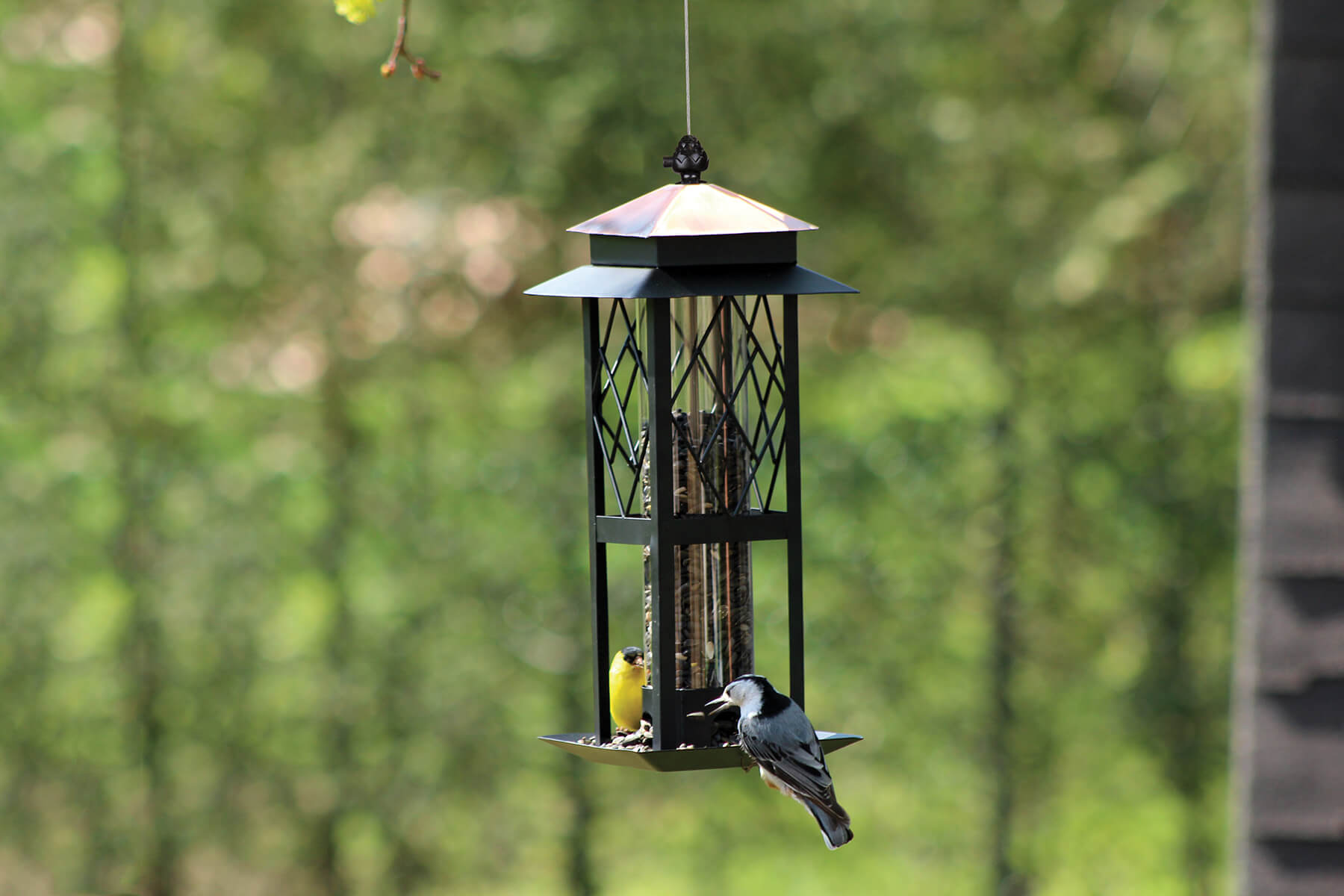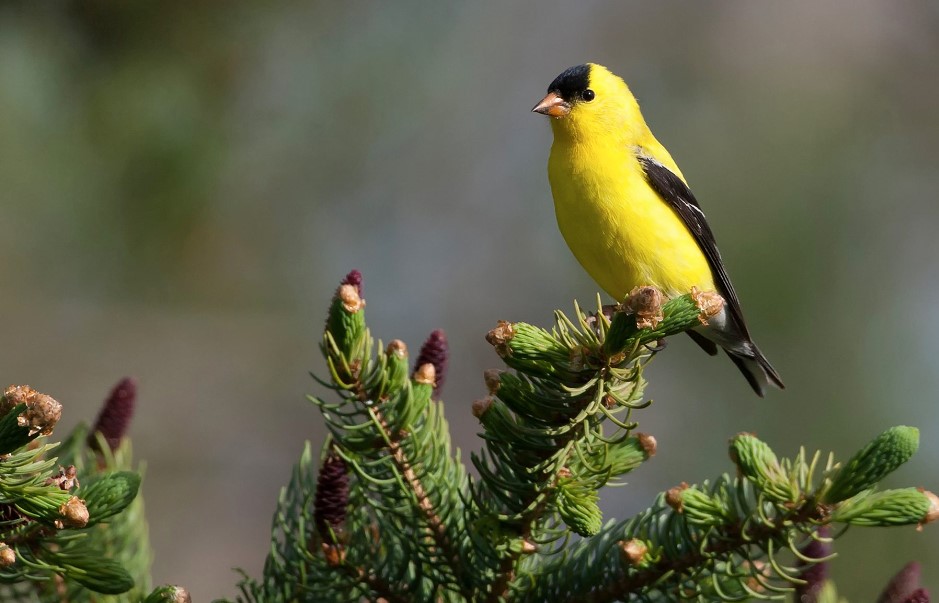A bit about Hummingbirds
Hummingbirds are sweet little creatures that got their name from the sound their wings make – hummmmm…which flap at an incredible 10 to 80 times per second.
In Canada, we enjoy about 10 different species of Hummingbirds. They are nectar-feeding birds (nectivorous) that are amazingly adapted pollinators. They play a crucial role in the pollination of many different flowers and drink the nectar with their long, slender bills and tube-like tongues.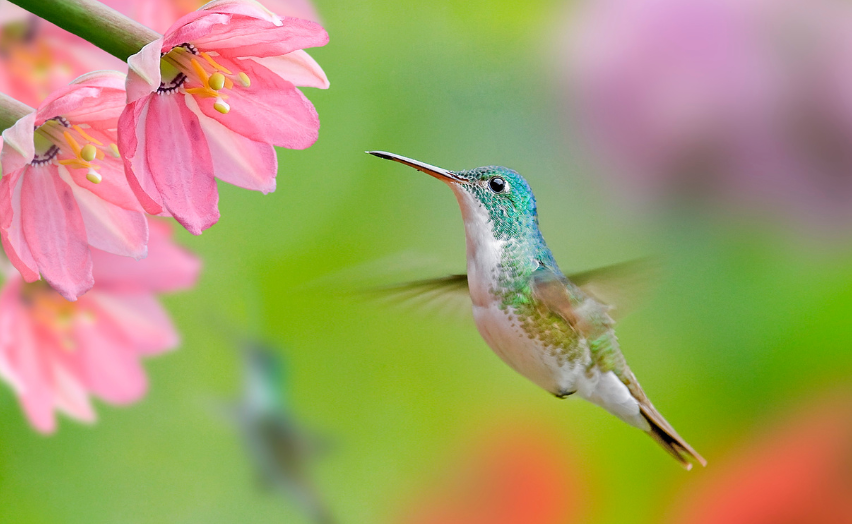
Hummingbirds may drink up to 2 times their body weight per day as it provides the energy they need to fuel their high metabolism. They supplement their diets with insects they catch while busily flying from flower to flower. This enables them to get the protein they need while efficiently pollinating at the same time.
At only 7.5 to 13cm in length, Hummingbirds may be small, but they are very useful as they travel 25 miles a day, on average. They can fly forward, backwards and even upside-down. Hummingbirds are facing some challenging times. These tiny birds are often at much greater risks than their larger relatives who may have a greater ability to adapt. Fortunately, there are several ways we can help these enchanting birds.
Hummingbird threats & how we can help
Hummingbirds face both natural and man-made threats, but we can help to reduce them, if we are aware of them.
Hummingbird Feeders: Hang a Hummingbird feeder to help feed these little pollinators but be aware that feeders can become dirty over time and can harbor toxic mold that kills hummingbirds. A clean hummingbird feeder is essential to the health of our little friends, and it must also contain fresh hummingbird food as rancid nectar can be deadly. Leaky feeders will attract bees and wasps that will attack hummingbirds so keep your feeders in good working order. Placing feeders away from windows will result in less collisions which can damage the bird or it’s beak and keep it from feeding. Collisions can also be fatal.
Shelter: Storms and cold weather can be fatal to these small birds and providing shelter is so important. Dwarf or ornamental trees work nicely for this as they fit in any landscape application. It would also be very helpful to place the hummingbird feeders in a sheltered area away from wind and rain.
Choose Organic Insect Control: Improper chemical use is especially toxic to these small birds and they can be easily poisoned. Try to minimize pesticide use and choose an organic option to control weeds, disease and pests whenever possible.
Water: Hummingbirds will bathe by rubbing on wet foliage if it is available, but a shallow bird bath is an ideal way to offer water to hummingbirds. It will also look great in your Hummingbird Garden.
Plant a Hummingbird Garden: A Hummingbird Garden doesn’t need to be large to be useful. A nicely laid out garden that is longer rather than deep will allow the Hummingbirds easy viewing and access. They are very attracted to blooms of red, pink, yellow and orange. Of course, Hummingbirds love a tubular flower such as a Trumpet vine, but there are many flowers available that will bring these captivating aviators to the garden.
Find a few examples below:
| Azalea | Fuchsia |
| Bee Balm | Lupine |
| Bleeding Hearts | Petunia |
| Butterfly Bush | Rose of Sharon |
| Cardinal Flower | Salvia |
| Columbine | Trumpet Vine |
| Foxglove | Zinnia |
Give a helping hand to these flying jewels and support habitat conservation through donations to appropriate organizations, such as ‘Hummingbirds Canada’.
Please visit at www.hummingbirdscanada.ca


